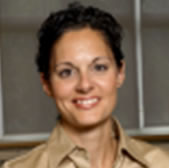There are moments in our teaching career when we can say that all the lessons that really mattered manifest themselves in the way our students think about and live their life. Once in a while we’re lucky enough to experience how they apply what they’ve learned to real-life contexts which demonstrate their deep understanding of certain issues or concepts and their ability to surprise us with unexpected levels of maturity.
This year, my grade team partner and I decided to base our teaching on the theme of responsible citizenship. Our teaching focuses on and supports the belief that “we can all be the change we want to see in the world,” as Mahatma Ghandi stated. What we read, write, and talk about involves issues linked to social justice and how each and everyone of us has a gift that we can use to make our world and environment better and healthier. We try to structure our units of study so that we follow an inquiry model. Students have control over what they learn because it’s based on their questions with respect to the issue we’re focusing on. We guide the students through a gradual release of responsibility as they dig deeper into their learning. The difference we see in many of our students is amazing. Their questions, connections, perspectives, and opinions have demonstrated more critical thinking and their analytical skills are developing nicely.
This past week when I told the class that I had registered the school for the Holiday Food Drive, they came up with a phenomenal inquiry which, I have to admit, proved that the model is becoming embedded into their learning. They suggested that we learn about hunger in the GTA (the cross-curricular links with Literacy, Math, Healthy Living, and Drama were obvious) and that as part of the inquiry and performance tasks they could educate younger students about hunger while leading the food drive for the school. They then asked if we could go to the Daily Bread Foodbank to drop off the food ourselves and possibly volunteer as a way of using what they learned to help their community. This is what it’s all about! When students understand how to use what they’ve learned and apply it to a real-life context in order to better the world around them, I believe our teaching comes full circle.

